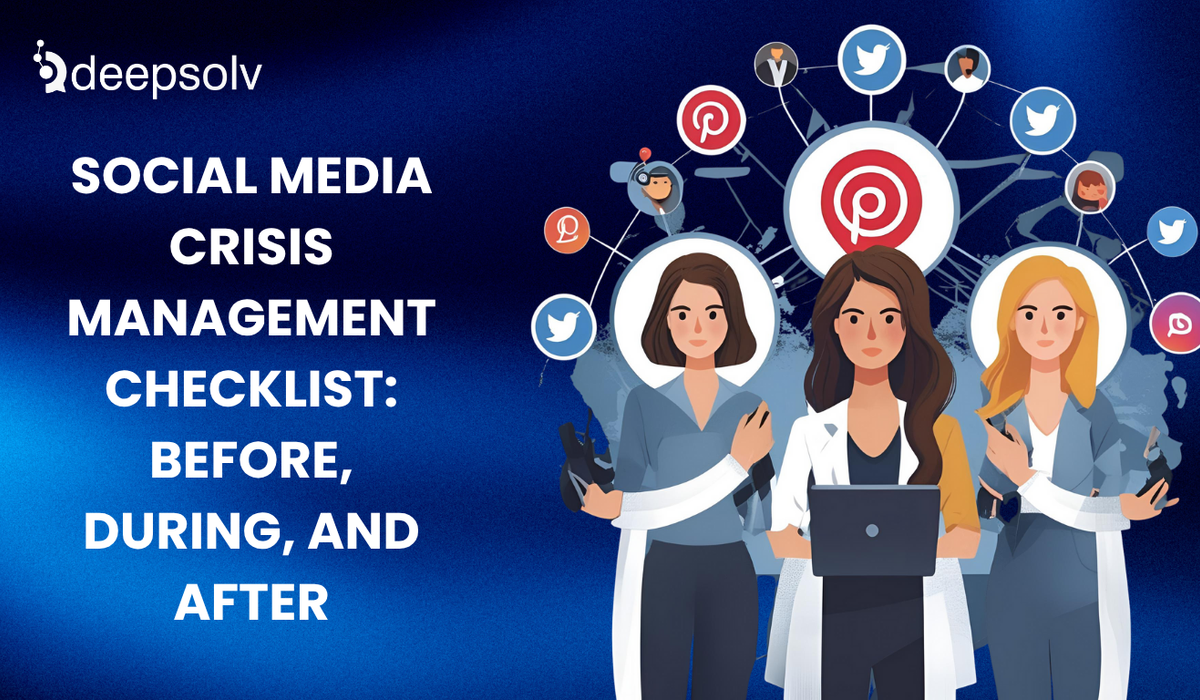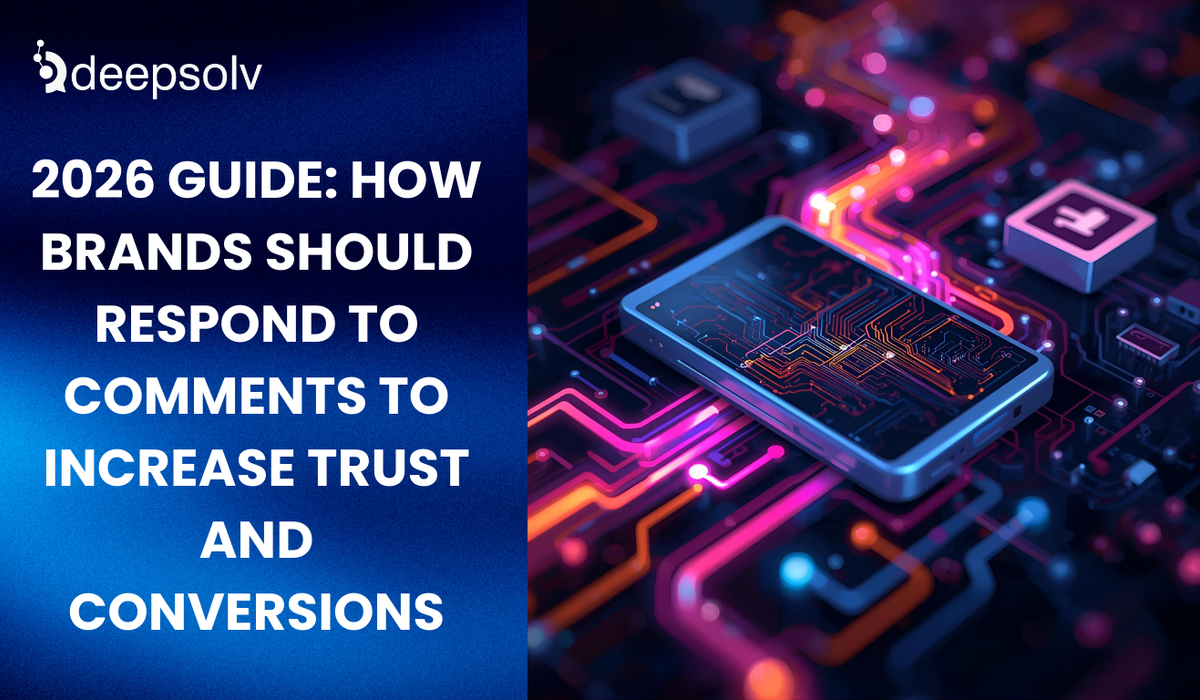Social Media Crisis Management Checklist: Before, During, and After
6 min read
Published: 7/27/2025

A single tweet can spark outrage. A misinterpreted ad, an employee slip-up, or even a viral TikTok taken out of context can throw your brand into the center of a digital firestorm. In today’s fast-paced world, social media crisis management isn’t optional- it’s survival.
Whether you're a startup or a global corporation, having a clear, actionable Social Media Crisis Management Checklist can be the difference between reputation damage and brand recovery.
Why Crisis Preparedness Matters
More than 70% of consumers expect brands to respond to online issues within 24 hours. But speed without strategy can worsen the situation. Effective crisis response requires preparation, coordination, and real-time insight.
From B2C giants like McDonald's to B2B SaaS platforms like Slack, companies that survive social storms are those that plan before the storm hits. When McDonald's UK faced backlash for a Mother's Day ad referencing child loss, their quick acknowledgment, content removal, and sincere apology helped prevent prolonged damage. Meanwhile, Slack faced a temporary service outage that impacted thousands. By immediately updating users on X (formerly Twitter) and their status page, they retained user trust.
Before the Crisis: Prevention + Preparation
Here’s what your team should have in place before anything goes wrong:
1. Build a Social Media Crisis Playbook
- Define what qualifies as a crisis (e.g., data leak, customer outrage, brand misinformation).
- Outline roles: Who approves what? Who responds to DMs/comments?
- Keep templates ready for holding statements.
2. Conduct a Risk Audit
Evaluate which business areas are most vulnerable:
- Influencer marketing (e.g., celebrity controversies)
- Supply chain (e.g., delivery delays)
- Customer service gaps
3. Set Up Social Listening & Alerts
Tools like Deepsolv can monitor brand mentions, sentiment shifts, and comment spikes in real-time.
- Set thresholds: For example, "If negative sentiment spikes by 30% in 2 hours, escalate to PR."
In one notable case, a beauty brand faced a coordinated spam attack targeting its posts with hundreds of negative comments. Thanks to Deepsolv, those comments were automatically flagged and hidden before they could escalate. Manual moderation would have taken hours — potentially costing the brand its reputation.
4. Train Your Team
Everyone from interns to leadership should understand the crisis protocol. Practice mock scenarios regularly.
Example: Zomato India avoided a full-blown crisis in 2022 by immediately addressing delivery complaints on X (formerly Twitter), offering public apologies and personalized coupon codes within minutes- their team was trained, and it showed.
During the Crisis: Contain + Communicate
Once the crisis hits, your response window is narrow. Here's how to navigate it:
1. Pause Scheduled Posts
Use Meta Business Suite or your content tool to pause posts across all platforms. Avoid tone-deaf content during a sensitive moment.
2. Acknowledge the Issue
Within the first 1–2 hours, post a holding statement:
"We’re aware of the issue and are actively working on a resolution."
Avoid: Deleting comments or going silent — it signals negligence.
3. Activate Deepsolv or Similar Tool
Deepsolv’s AI-powered comment assistant helps:
- Auto-reply to angry comments with human-like empathy
- Route high-risk replies to humans
- Monitor evolving sentiment in real-time
During a late-night spike in negativity on a personal care brand’s Instagram, Deepsolv flagged inappropriate spam comments and hid them instantly. The marketing team was alerted at 7 AM, but the issue had already been contained- saving them from waking up to a potential viral backlash.
4. Move to Private Channels
Offer support via DMs, email, or customer support forms. For example, Swiggy redirected negative comments to private channels while offering real-time help publicly.
5. Keep Stakeholders Updated
Your internal teams, partners, and even investors should be in the loop. Share talking points to keep messaging consistent.
After the Crisis: Reflect + Rebuild
The dust has settled. Now comes the recovery phase.
1. Conduct a Post-Mortem
- What triggered the crisis?
- What went right in your response? What didn’t?
- Document learnings in your crisis playbook.
2. Rebuild Trust with Transparency
- Issue a longer-form explanation if needed
- Highlight actions taken (policy changes, refunds, apologies)
Example: When FabIndia faced backlash over a Diwali ad in 2021, they swiftly removed the campaign, issued a formal apology, and clarified their cultural stance. Their clarity helped regain public support.
3. Resume Regular Posting Gradually
Ease back into content with community-first posts. Avoid hard sells for at least 72 hours.
4. Update Your Playbook
Use what you learned to revise:
- Your listening tools (Are your keywords broad enough?)
- Escalation criteria (Did something escalate too slowly?)
5. Monitor Sentiment Over Time
Use Deepsolv to:
- Track sentiment change post-crisis
- Identify returning user trust
- Auto-respond to delayed comments that may still carry heat
Real-World Platform-Specific Notes
- Facebook: Moderate all comments actively; pin a statement post; use Deepsolv to auto-respond.
- Instagram: Stories can be used to issue updates fast. Watch for backlash in comments.
- X (Twitter): Expect rapid escalation. A single retweet can spark a movement.
- LinkedIn: For B2B brands, address professionally. Use thought leadership to explain your stance.
- TikTok: Be wary of duets and stitches. Crisis content can go viral in unpredictable ways.
Final Thought
A social media crisis doesn’t define your brand. But your response does.
With the right checklist, proactive planning, and smart tools like Deepsolv, you can not only weather the storm but come out stronger, with loyal customers who appreciate your honesty and resilience.
FAQs
Frequently asked questions related to this blog post



